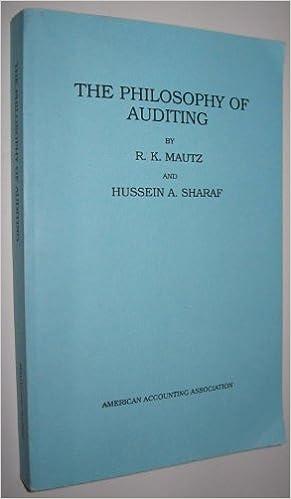Question
The Questions below are an example and along with the answers, the real question will come after this because its worded exactly the same I
The Questions below are an example and along with the answers, the real question will come after this because its worded exactly the same I just need some one to use exactly the same calculation procedure as this one below
EXAMPLE QUESTION WITH ANSWERS
Consider a bank which operates as a monopoly. The bank faces a pool of high and low risk borrowers with measure one in two successive periods. In each period, each borrower wishes to borrow 1 from the bank. Low risk borrowers projects return G=1.7 with probability pg=0.8 and the projects of high risk borrowers yield B=2.55 with probability pb=0.4 in each period and zero otherwise. The bank knows that the proportion of low risk borrowers is =0.45. However, the bank is unable to tell apart low and high risk borrowers, i.e. it doesnt have an appropriate screening technology. (Think of borrowers as small, start-up companies)
a) Whats the repayment R(1) that the bank will charge in the first period? Compute the banks first period profit (1).
b) Calculate the posterior probabilities of a borrower being low risk given that the project was successful and also when the project failed after the first period (i.e. Pr(G|S),Pr(G|F), respectively).
c) How much will the bank charge to successful and failed borrowers in the second period (R(2)S,R(2)F)? Calculate the banks second period profit (2) . Will the bank make a loss or a profit in total ((1)+(2)) ?
Note that pgG>pbB>1 as 1.36>1.02>1 , so the bank has two profitable strategies. First, in principle the bank can make profit by lending only to high risk borrowers since pbB>1 . Charging a repayment rate anything above G would result in only high risk borrowers applying for a loan. If the bank serves only high risk borrowers, then it will charge the highest repayment rate such that the high risk borrower breaks even. So R=B and the bank would get 0.55(1.021)=0.011 , which results in 0.022 total profits over the two periods. Second, the bank can try to differentiate among borrowers. In this case, it will have to charge a low enough repayment rate in the first period to attract low risk borrowers and then differentiate among borrowers in the second period depending on whether they were successful or unsuccessful in the first period.
a) To attract low risk borrowers, the bank cannot charge higher repayment rate than R(1)=G=1.7 in the first period, otherwise only high risk borrowers would apply. The average probability of success if both types of borrowers receive loans is pg+pb(1)=0.80.45+0.40.55=0.58 So banks expected profit is (1)=0.581.71=0.014, , i.e. the bank makes a loss in the first period if it attracts both types of borrowers.
b) The posterior beliefs are as follows: Pr(G|S)Pr(G|F)==pgpg+pb(1)=0.360.58=0.621(1pg)(1pg)+(1pb)(1)=0.20.450.20.45+0.60.55=0.214
c) In the second period, everyone who were successful will get a lower interest rate again R(2)S=G=1.7. Those who dont succeed will have to pay more. At this higher rate, however, all good firms who were unsuccessful will drop out (why?) and only bad firms will want to get a loan. Therefore, the monopolistic bank can increase the repayment rate for unsuccessful borrowers to R(2)F=B=2.55 . Noting that the number of bad firms who failed in the first period is 0.60.55=0.33 , the banks profit in the second period will be (2)=0.58[(0.6210.8+0.3790.4) 1.71]+0.33[0.42.551]=0.066 . So in total across the two periods the bank will make 0.052. This is much higher than 0.022 , the profit that the bank would have made lending only to high risk borrowers in both periods.
REAL QUESTION
A bank faces a pool of high and low risk borrowers with measure one in two successive periods. In each period, each borrower wishes to borrow 1 from the bank. A low-risk borrowers project returns G=2 with probability pg=0.8 and high-risk borrowers project yields B=3 with probability pb=0.2 in each period. If a project is unsuccessful, it yields zero. The bank knows that the proportion of low-risk borrowers is =0.5. However, the bank is unable to distinguish between low and high-risk borrowers, i.e. it doesn't have an appropriate screening technology.
Consider a bank which operates as a monopoly and wants to attract both types of borrowers in the first period.
i. What's the repayment R(1) that the bank will charge in the first period? Compute the bank's first period profit (1).
ii. Calculate the posterior probabilities of a borrower being low risk given that the project was successful and also when the project failed after the first period (i.e. Pr(G|S),Pr(G|F) , respectively).
iii. How much will the bank charge to successful and failed borrowers in the second period (R(2)S,R(2)F)? Calculate the bank's second period profit (2). Whats the total profit across the two periods ((1)+(2))?
Step by Step Solution
There are 3 Steps involved in it
Step: 1

Get Instant Access to Expert-Tailored Solutions
See step-by-step solutions with expert insights and AI powered tools for academic success
Step: 2

Step: 3

Ace Your Homework with AI
Get the answers you need in no time with our AI-driven, step-by-step assistance
Get Started


